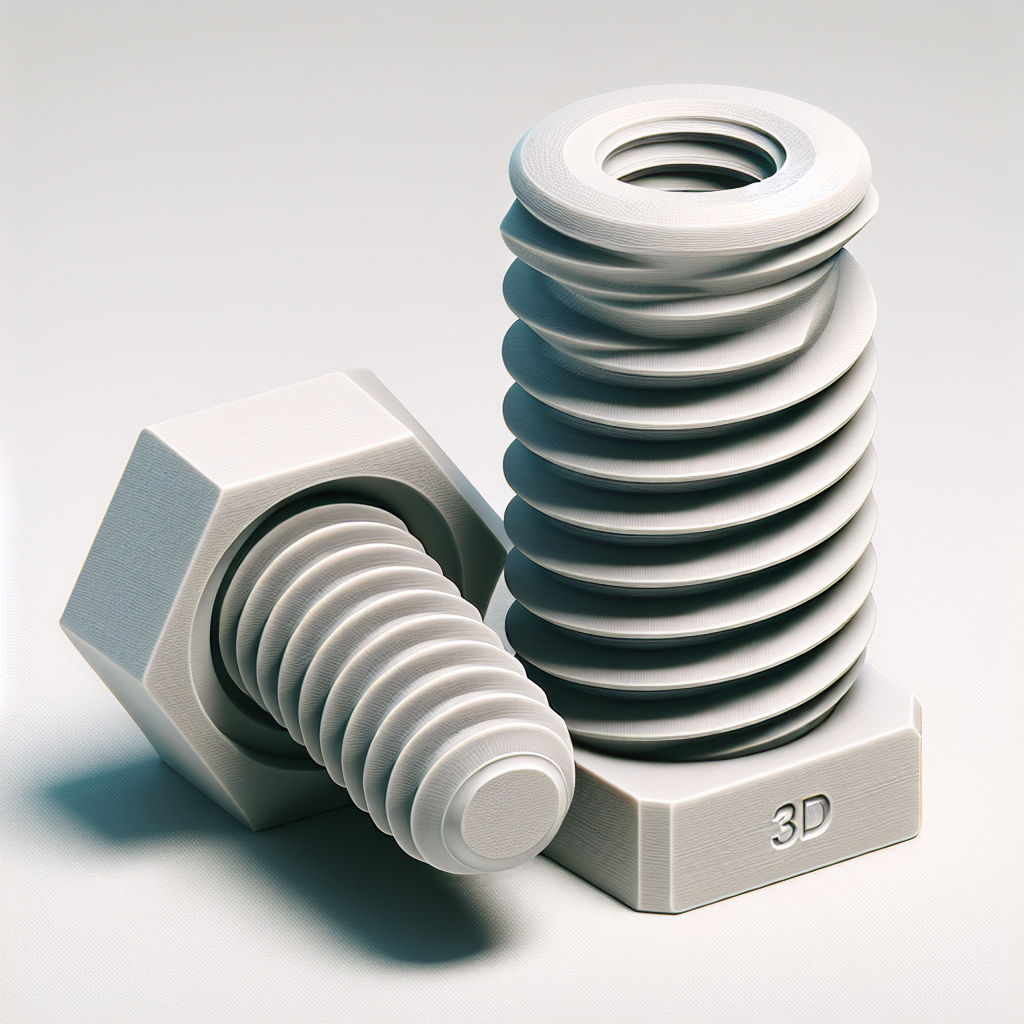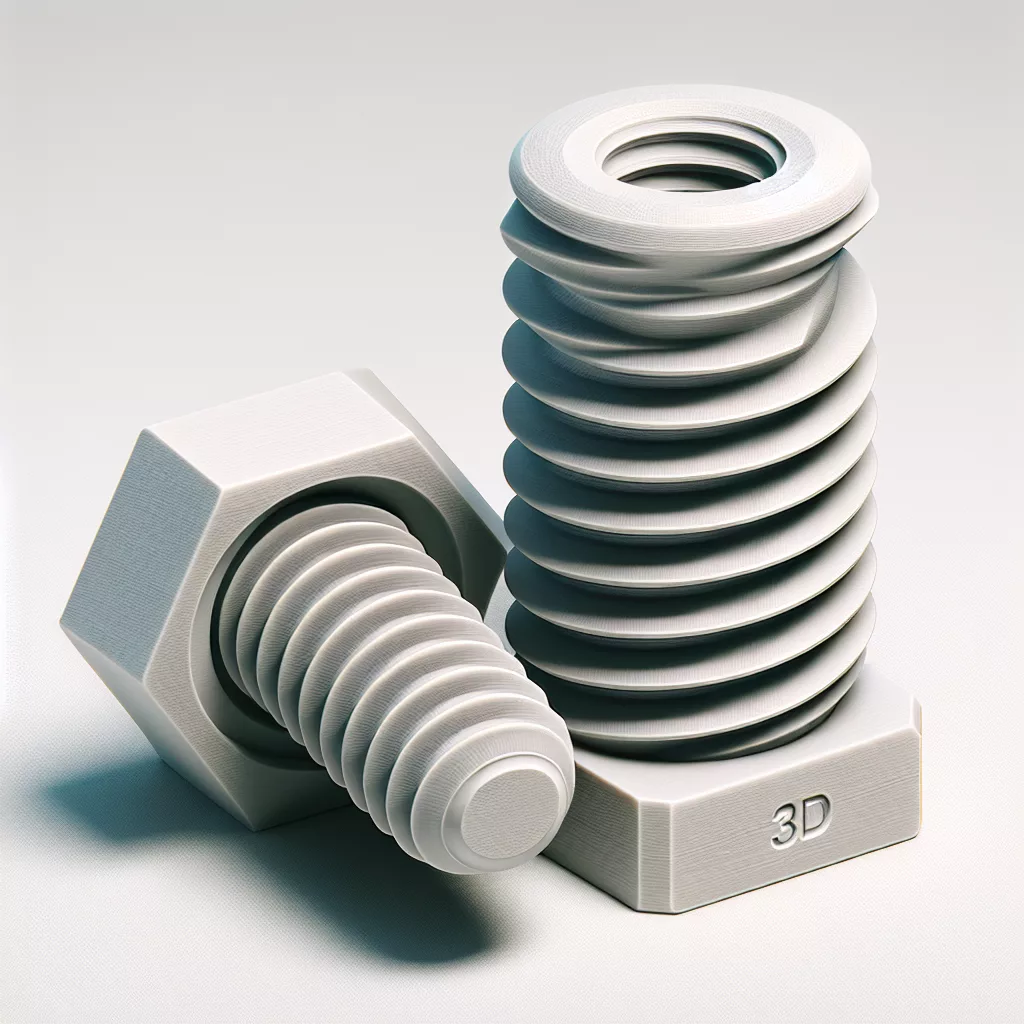Understanding the Challenge: 3D Printed Threads
3D printing screws and bolts opens up endless possibilities for custom hardware and quick prototyping, but one common frustration is threads stripping out after only a few uses. This usually happens because FDM (fused deposition modeling) prints aren’t as strong as traditional metal fasteners. With the right techniques, however, you can produce surprisingly functional and durable threaded parts.
Material Matters: Choosing the Right Filament
The choice of filament has a massive impact on thread durability. Here are some recommendations from years of trial and error:
- PLA: Easy to print, but relatively brittle. Threads will strip quickly under load or repeated use.
- PETG: More flexible and durable than PLA; a good starting point for functional threads.
- ABS: Tougher than PLA, but can be tricky to print due to warping and fumes.
- Nylon: The best option for strength and wear resistance. Nylon threads resist stripping exceptionally well but require high print temperatures and good bed adhesion.
- Polycarbonate: Extremely strong, but also challenging to print. Ideal for high-performance applications.
Design Tips: Modeling Robust Threads
Thread durability starts in your CAD software. Here’s what I’ve found works best:
- Increase Thread Engagement: Longer threads distribute force over a larger area, reducing the risk of stripping.
- Oversize Threads: FDM printers often have trouble with tiny details. Scale threads up by 5–10% for better fit and strength.
- Use Trapezoidal Threads: Standard V-threads are weak in plastic. Switch to trapezoidal (ACME-style) or square threads for better load distribution and durability.
- Add a Chamfer or Lead-in: This helps the screw start threading smoothly, reducing cross-threading risk.
Print Settings for Stronger Threads
Your slicer settings can make or break a printed screw or bolt. Use these proven tips:
- High Perimeter Counts: Increase wall/perimeter count to 4 or more. Threads are most often stripped from weak outer walls.
- Higher Infill (≥50%): More infill adds strength, especially in small parts.
- Lower Layer Heights: Finer layers (0.1–0.15mm) ensure smoother threads that engage better.
- Print Slower: Slow down print speeds for threaded regions to improve accuracy and strength.
- Use 100% Infill for Small Screws: For tiny hardware, solid infill prevents core collapse.
Post-Processing for Durable Threads
Sometimes a little cleanup goes a long way:
- Thread Chasing: Use a metal tap and die set to chase (clean up) the 3D printed threads. This ensures smooth fitting and reduces stress risers.
- Lubrication: A touch of PTFE (Teflon) or silicone grease helps screws turn smoothly and reduces frictional wear.
- Heat Treatment: For nylon or polycarbonate parts, gently heating in a low oven (below glass transition temperature) can relieve stresses and improve durability.
Bonus Techniques: Inserts, Resin, and Hybrid Approaches
If you need maximum strength, consider these approaches:
- Heat-Set Inserts: For female threads, press in brass heat-set inserts. These provide metal-on-metal durability that never strips.
- Threaded Rod Core: For large bolts, embed a metal rod during printing for ultimate strength.
- Resin Coating: Brush on thin superglue (CA) or epoxy to reinforce threads after printing.
Testing and Best Practices
Finally, always test your design before using it in a critical application. Assemble and disassemble the threads several times to check for wear. If you notice any binding, excessive play, or white stress marks, consider modifying your design or material choice.
Conclusion
3D printing screws and bolts is entirely feasible and often surprisingly robust when using the right design, material, and print settings. With some experience and the tips above, you’ll be able to whip up custom fasteners for all kinds of projects—without worrying about threads stripping out before the job’s done. Happy printing!


Leave a Reply